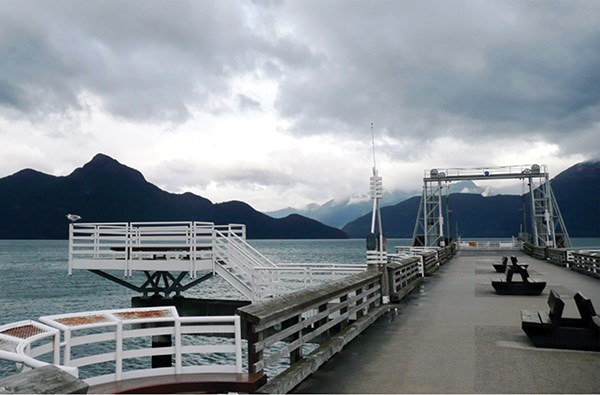The tumultuous history of Anvil Island, visible from Highway 99 between Brunswick Beach and Porteau Cove, is highlighted in a new book, First Dollar: Pipelines, Ports, Prisons and Private Property.
The author, Alex Rose, examines how pioneers often stole land from aboriginal people when they first settled in British Columbia. He looked for instances of what he calls “the great land grab” in the Sea to Sky Corridor.
The book discusses how a growing number of aboriginal leaders, including those of the Squamish Nation, are unlocking the value of their lands in order to enter the economic mainstream.
“I have an old friend who has a summer home on Anvil Island and he told me a story, so I researched it,” said Rose.
“I’ve driven up Howe Sound many times and I’ve boated around the island, so this brought it close to home.”
After talking to people in the Squamish Nation, he learned that Anvil Island, which is part of the Nation’s traditional territory, is considered a sacred place.
Known to the Squamish First Nation as Lhaxwm, the island was used as a fishing camp by the Squamish people long before it was named for its shape by George Vancouver.
In 1847, after sailing through Howe Sound in search of a place to settle, Englishman Thomas Keeling landed on the island. He bought the land from the government and became rich after finding nearly 90 acres of clay that was ideal for making bricks.
“This shocking Anvil Island history gives insight into why First Nations today are so determined to protect their land and marine resources today,” said Rose.
In an excerpt from his e-book, Rose writes: “Today, the Keeling family owns about one-quarter of the island, still claimed by the Squamish Nation as part of its traditional territory, and today integral to the Nation’s Howe Sound revitalization.”
First Dollar: Pipelines, Ports, Prisons and Private Property is available to purchase through Amazon.
EXCERPT:
The land grab that so defined the colonial enterprise also took place at Anvil Island in Howe Sound. Known to the Squamish First Nation as Lhaxwm, Anvil Island sits in Howe Sound 30 kilometres north of Vancouver. Considered a sacred place in Squamish cosmology, it was also used as a fishing camp by the Squamish people…
The island was an important place of spiritual training for the Squamish. According to legend, the spirit of a powerful serpent lives on its peak. Squamish warriors would get dizzy from its power. And mythical monsters known as sasquatches (smaylílh) are said to have walked the pebbly shores of the island, while at its summit lives a giant mythical spirit known as Kwelháynexw ta élhkay.
The island was anglicized on June 14, 1792 by Captain George Vancouver, whose journal for the day reads: “The sun shining at this time for a few minutes afforded an island which, from the shape of the mountain that composes it, obtained the name of Anvil island.”
Today, as locals tell the story, the island was stolen from the aboriginal people. Apocryphal it may be, the tale illustrates the kind of attitude that was so pervasive among the colonists some 130 years ago.
Editor’s note: Alex Rose works in communications for the Squamish Nation.




